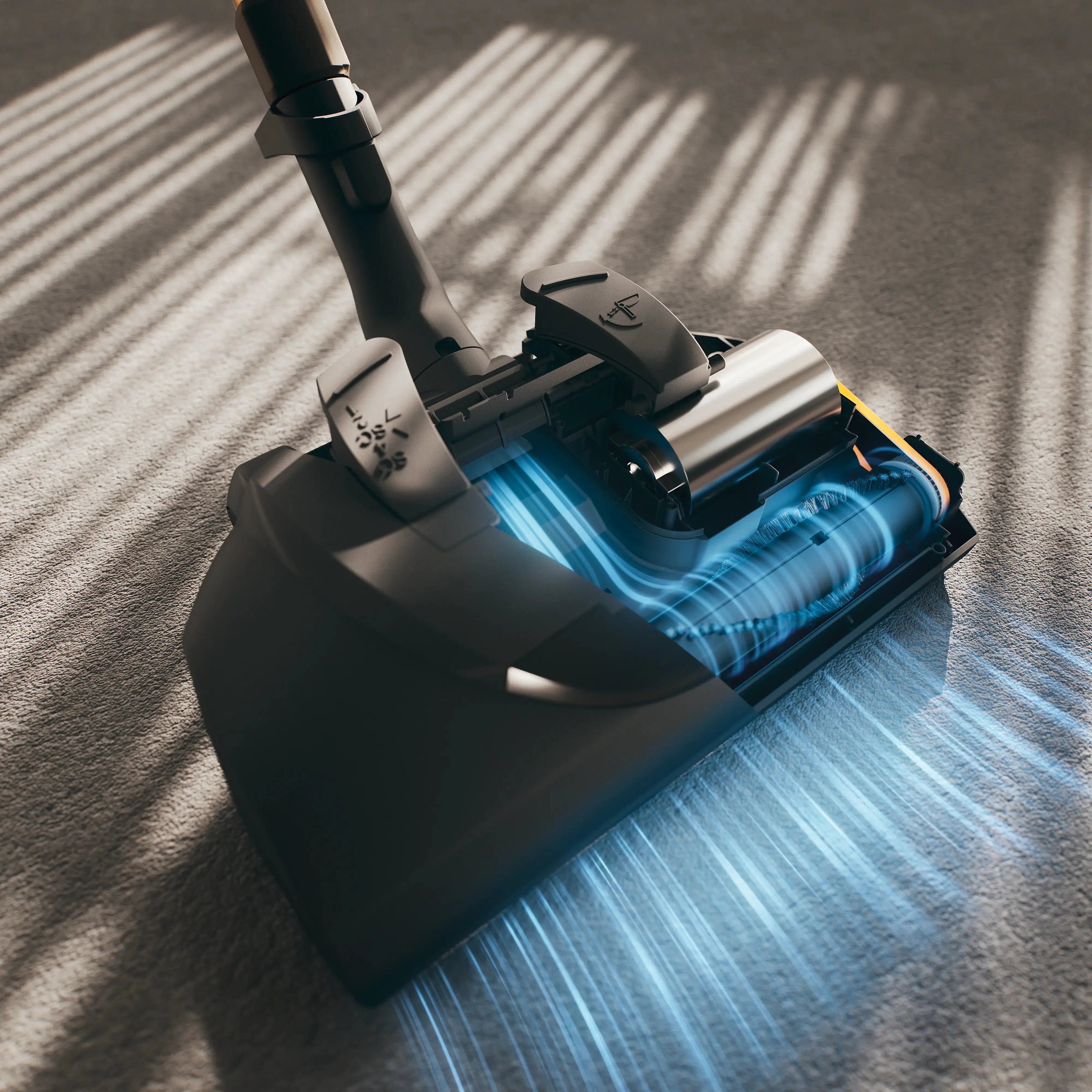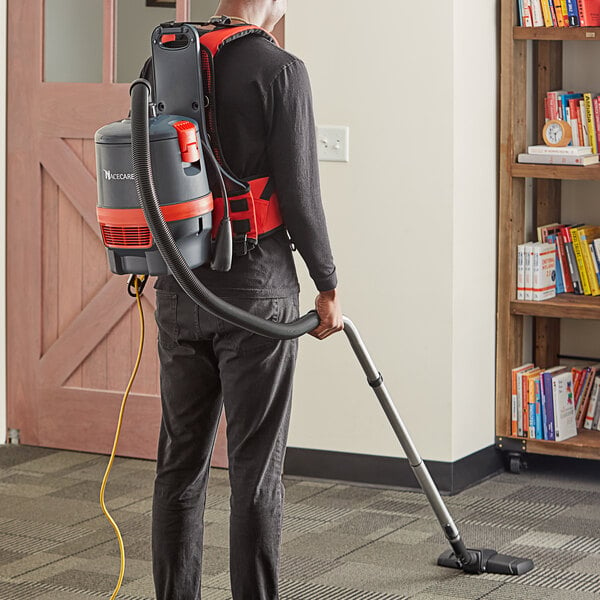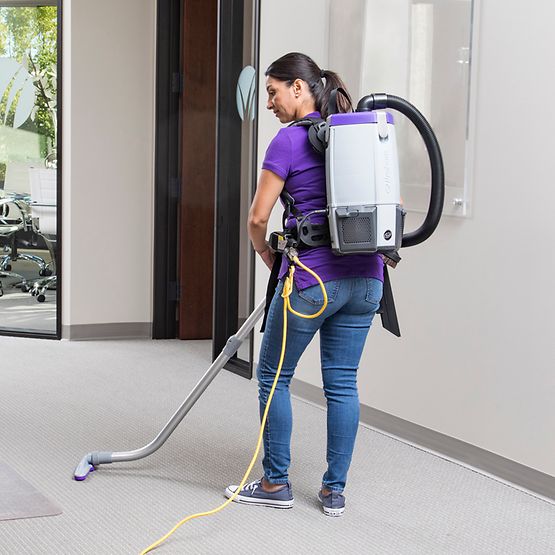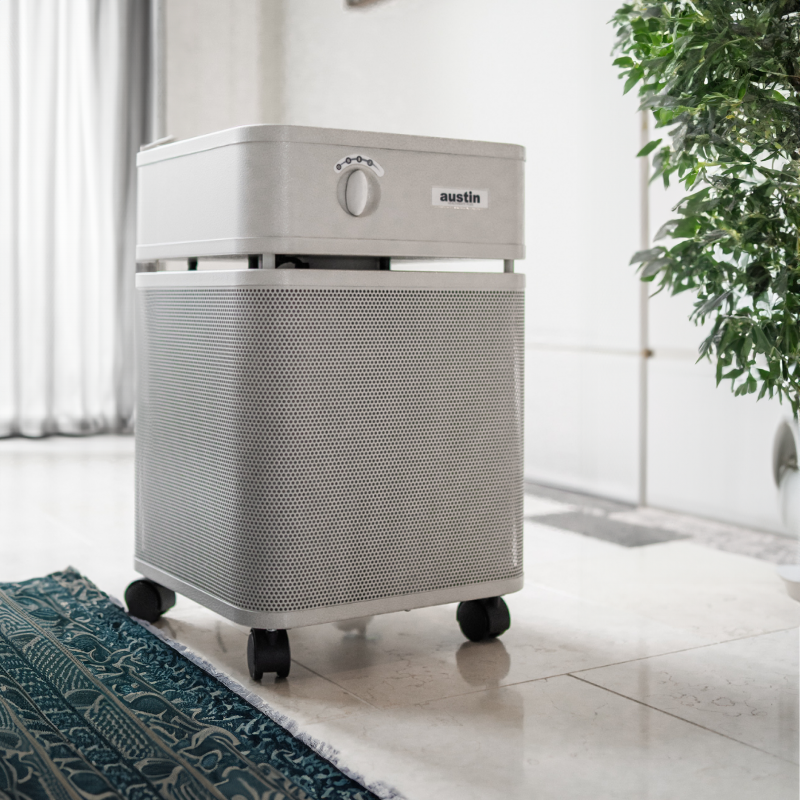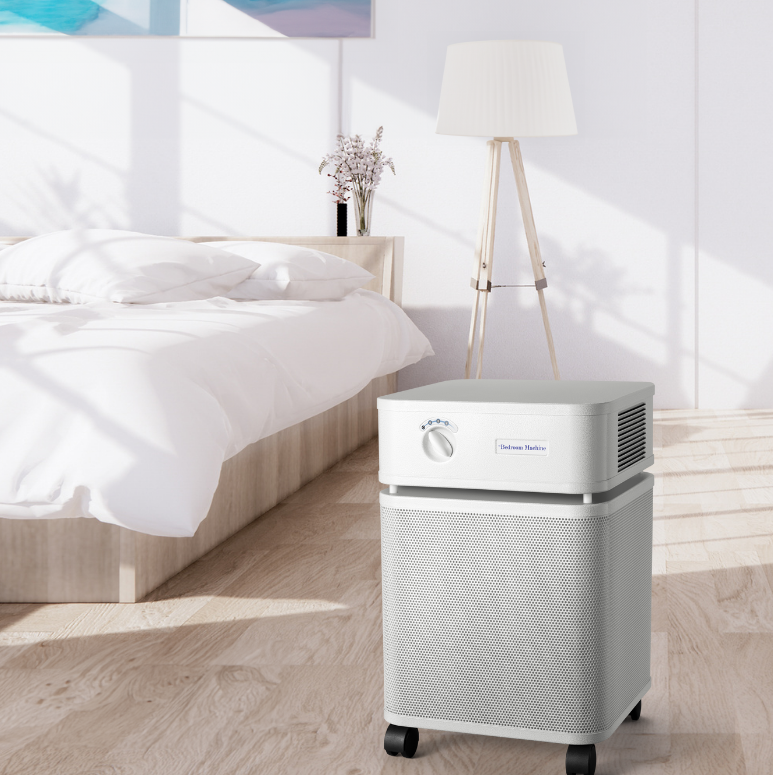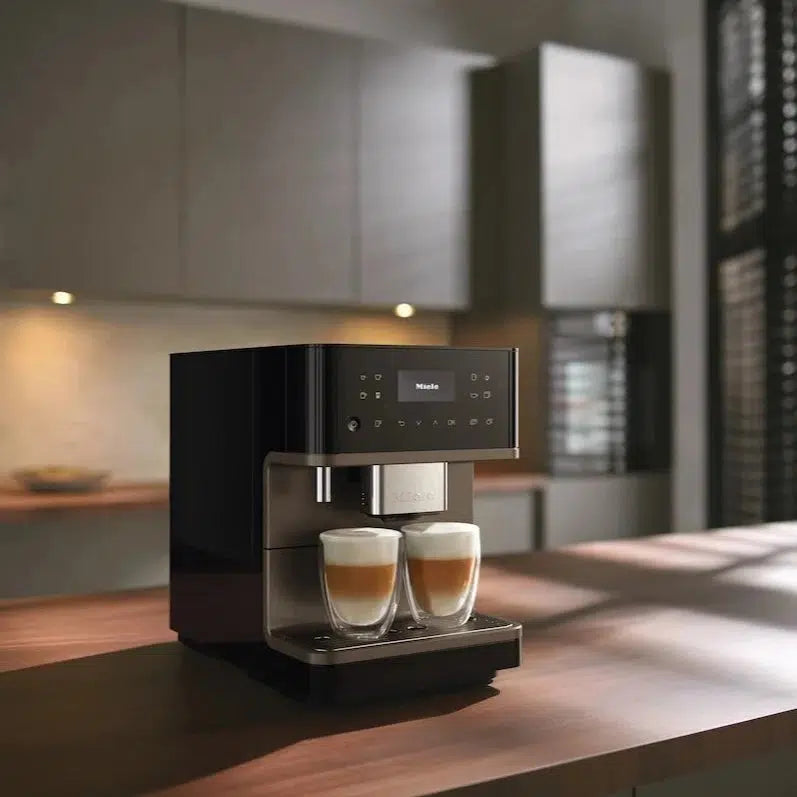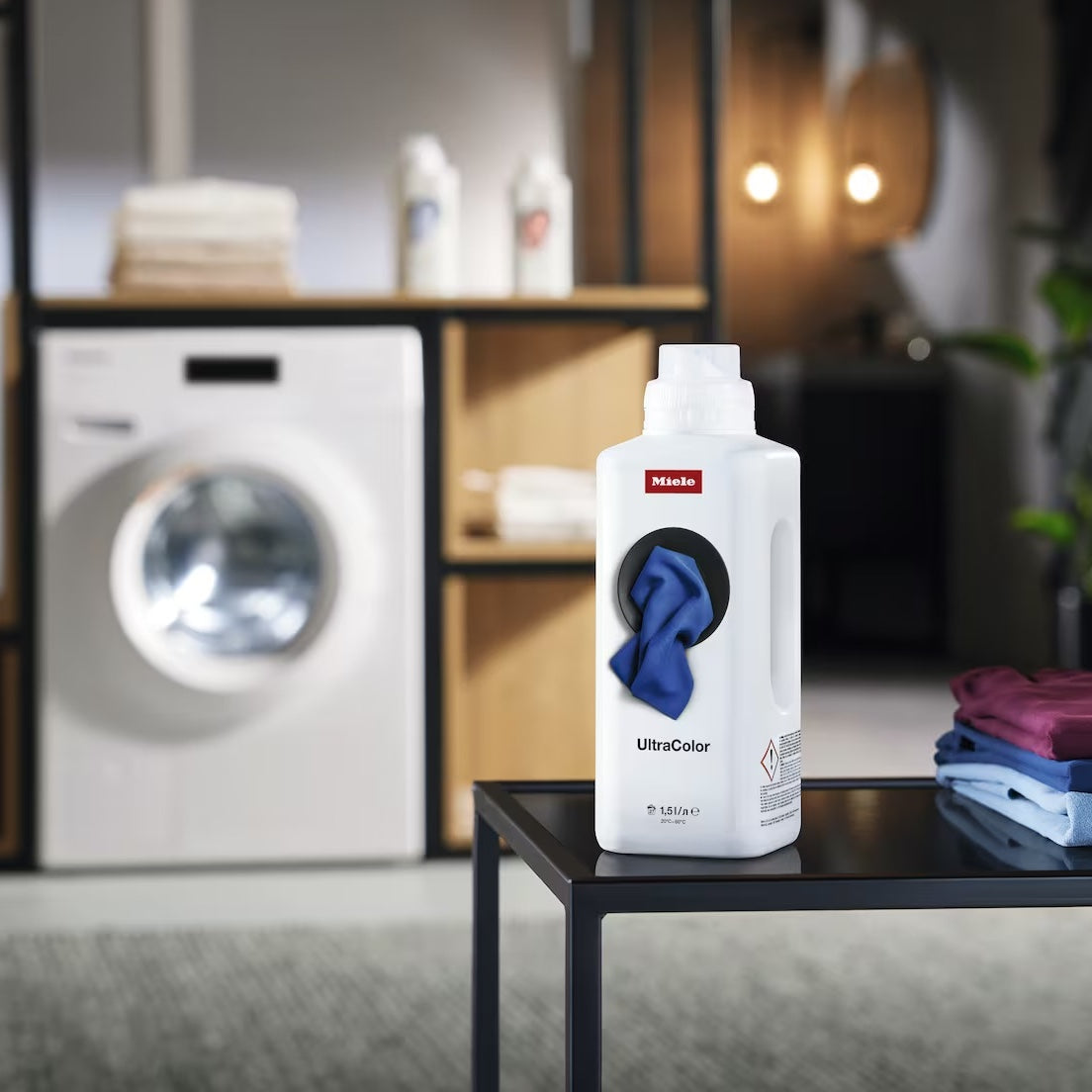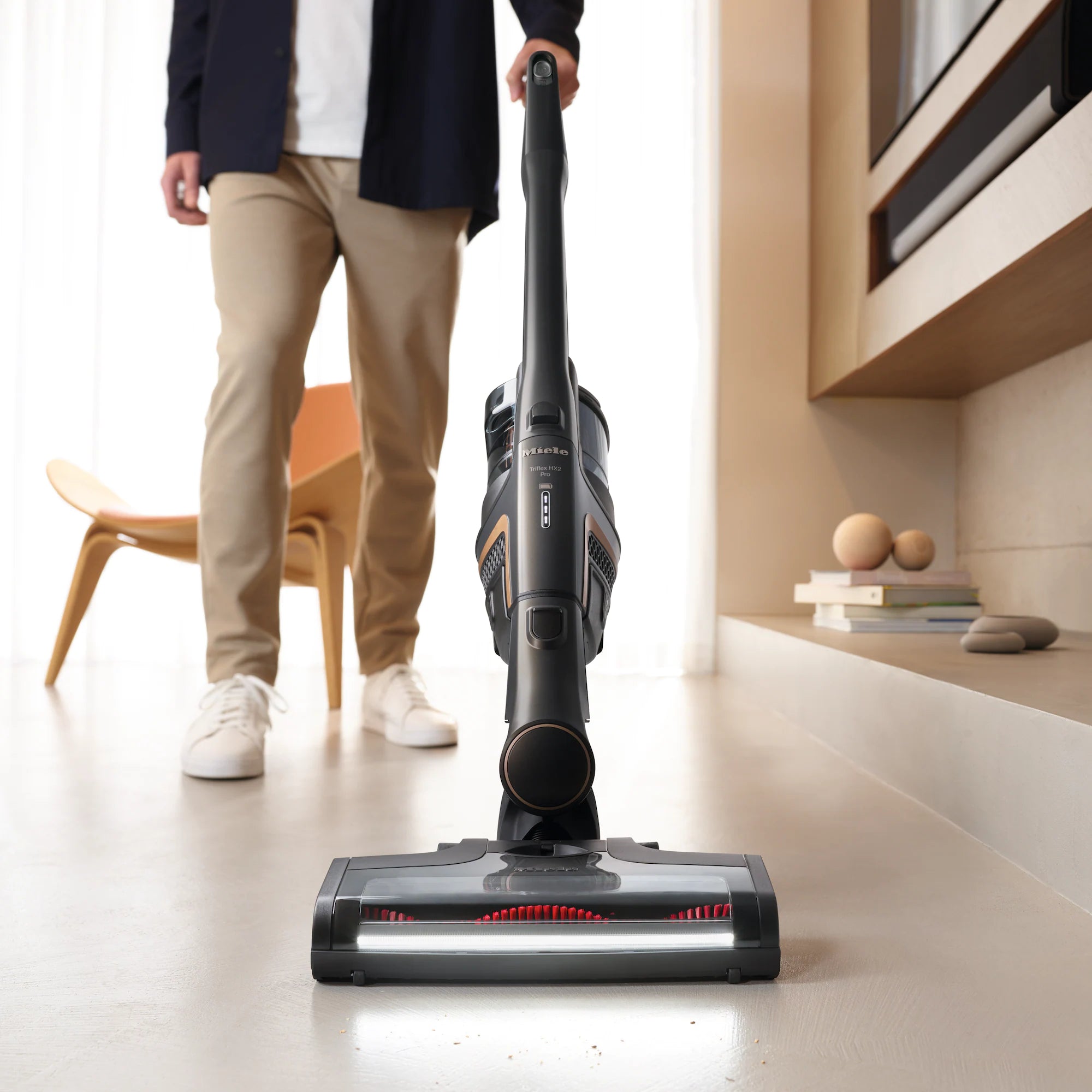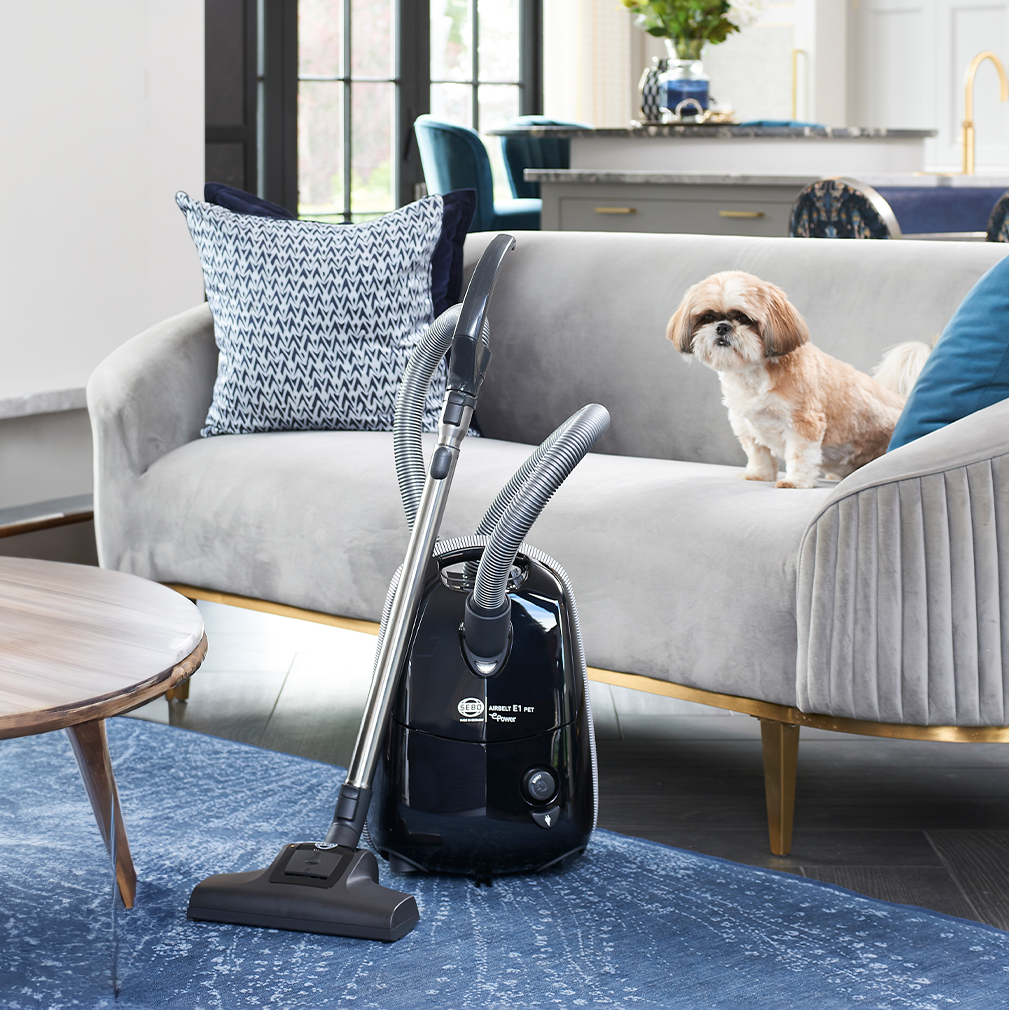How Portable Air Purifiers Work
Air purifiers are designed to remove pollutants from indoor air. The types of indoor air pollutants that can be reduced or controlled by portable air purifiers fall into three major classes; particulate, gaseous and biological.
Over the past several years there is ever increasing scientific evidence that indoor air can become far more polluted than outdoor air—with concentrations from 2 to 5 times to as much as 100 times those found outdoors. Given that most people spend close to 90% of their time indoors, this means that the health risks posed by polluted indoor air may be significantly greater than those of outdoor air pollution. Learn how air purifiers work and why you should use portable room air purifiers in your home.
Indoor Air Pollutants
Particle Air Pollutants in Indoor Air
The particles of greatest concern are those that are small enough to remain suspended in room air for extended periods, where they may be easily inhaled. These very small particles can reach the deepest recesses of the lungs where they can become lodged for extended times, causing acute or chronic effects.
The term "particle" refers to the size of the pollutant and particle pollutants may include solids, liquids (in the form of mists), organic and inorganic compounds, living and dormant organisms.
According to the U.S. EPA, these small particles may cause a wide range of extremely negative health effects such as, aggravated asthma, acute respiratory symptoms including aggravated coughing and painful or difficult breathing, eye, nose, and throat irritation, respiratory infections and chronic bronchitis, decreased lung function, shortness of breath and lung cancer.
And, for allergy sufferers, these very small particles may include all sorts of allergens, including dust mite feces, which contains an allergen that is thought to be responsible for a significant percentage of allergies worldwide. Serious and even life threatening allergic reactions can also be triggered by larger particles such as pollens, some molds and animal dander that may not penetrate as deeply into the lungs.
Having the cleanest possible indoor air is also important to asthma sufferers, many of whom can have asthma attacks triggered by exposure to a variety of allergens and other indoor pollutants.
The health effects from particles small enough to be respirable, known as lung damaging particles or LDPs, are dependent upon the types of particles in the environment, how concentrated they are, how often and how long a person is exposed to them and the individual's sensitivity.
Gaseous Air Pollutants in Indoor Air
There are also hundreds of different types of gaseous pollutants that have been found in indoor air. Some of these are combustion gases such as from tobacco smoke, combustion appliances such as heaters and stoves or from vehicle exhausts that enter the living space from attached garages or from outdoors.
Other gases enter indoor air from a wide variety of sources such as building materials, furnishings, cleaning compounds, air fresheners, paints, adhesives, solvents, caulks, personal care products, pesticides, waxes, craft and hobby materials, deodorizers, cooking, as well as the metabolic processes of plants, animals and humans.
Like particles, the health effect from exposure to gaseous pollutants depends upon the chemicals and their concentrations, how often and how long a person is exposed to them and the individual's sensitivity. Adverse health effects may include allergic reactions, asthma attacks, irritation of the eyes and/or respiratory tissues; effects on the liver and the respiratory, immune, cardiovascular, reproductive and/or nervous systems and cancer.
Biological Pollutants in Indoor Air
Biological pollutants are or were living organisms in the indoor environment. There are a wide variety of biological contaminants in indoor air including dust mites and their fecal matter, animal dander, cat saliva, molds, mildew, bacteria, pollen, viruses, bacteria, etc. These come from a number of sources such as plants, animals and humans and can be quite persistent in indoor air.
Many of these pollutants can be small enough to be inhaled and create the health problems caused by respirable particles as described above, while others can cause allergic reactions or be infectious or toxic in nature.
The many biological pollutants in indoor air can create a wide range of negative health effects. These include triggering allergic reactions and asthma attacks; the transmission of infectious diseases such as flu, measles and chicken pox; molds and mildews may release disease-causing toxins and biological pollutants may also cause numerous symptoms of non-specific health effects that may include coughing, sneezing, watery eyes, shortness of breath, dizziness, digestive problems, fever and lethargy.
Toxic microorganisms may also grow in home heating and cooling systems and humidifiers and cause very serious illnesses such as Legionella and humidifier fever. And, very serious illnesses such as tuberculosis, measles, staphylococcus infections, and influenza are known to be transmitted by air.
Three Strategies to Improve Indoor Air
There are three basic strategies to improve indoor air. These are source control, increasing ventilation and the use of air purifiers.
When there is an obvious source of indoor air pollution, especially gaseous compounds, such as from a malfunctioning gas heater or smoking indoors, source control is, naturally, the most sensible solution. However, when the initial source of the problem is polluted outdoor air, there is no way to effect source control.
And, in the case of certain allergens, there is no practical method of source control. For example, dust mites are practically impossible to eradicate and even though the recommendation of most doctors when a member of the family is diagnosed with pet allergies is to remove the pet from the environment, less than 10% of families can bear the trauma of such a radical solution. And there is no way of controlling the source of other naturally occurring allergens such as pollens.
The second strategy of increased or improved ventilation also makes good sense. Remember that one of the issues concerning polluted indoor air is the concentration of outdoor pollutants indoors. Therefore, diluting indoor air with outdoor air is a smart strategy and is done by opening windows and operating fans when weather permits. It is also a good idea to operate properly installed bathroom and kitchen exhaust fans to expel contaminants and moisture from the home as they are produced.
Increased ventilation has two major drawbacks. The first is the cost of heating or cooling outside air brought into the home. The second is that, in the case of allergy sufferers, outside air may contain many of the allergens that cause the problem in the first place.
The third strategy is the use of air purifiers, also known as portable room air cleaners. Air purifiers fall into two classes; whole house systems that are typically incorporated into the forced air heating, ventilation and air conditioning (HVAC) system and portable models that are designed to purify the air in a single room or group of rooms.
The principles employed in whole house and portable air purifiers are basically the same, although the way those principles are applied may differ in order to address the technical challenges of each application. This article will focus on how portable air purifiers work.
If your home has a forced air heating and/or cooling system, an air purifier that is attached to this system can be quite effective. However, in order to be providing air purification, the furnace blower (fan) must be operating. Because most forced air heating and cooling systems operate the fan intermittently in order to conserve fuel costs, the air is not being purified when the fan is not running.
In addition, whole house air cleaners are able to reduce contaminants in indoor air, but not to the degree that portable units can. And, whole house units that perform well may be quite expensive. Although helpful, whole house air purifiers have their limitations.
Because portable room air purifiers can deliver much higher levels of clean air into a defined space, they may be used as an excellent companion to a whole house air purifier, for example, in bedrooms or other rooms where the home's occupants spend most of their time. In homes that do not use forced air heating and cooling, portable air purifiers are the only option.
How Portable Air Purifiers Remove Particle Pollutants
There are three ways that particulate pollutants are removed from indoor air by portable room air purifiers. These include mechanical filtration, electronic precipitation and ion generation.
Most air purifiers also fall into similar classes based on the way they clean the air, i.e. mechanical filtration air purifiers, electronic precipitators and ion generators although new, hybrid air purifiers often combine two or more of these air purification technologies. There are also some variations of existing technologies such as those that offer air purification through "air washing" in water.
Particle Removal by Mechanical Filtration
Air purifiers utilizing mechanical filtration to remove particles from indoor air have two important elements, a fan and a filter or series of filters. The fan draws room air into the unit, passes it through the filter(s), and then expels filtered air back into the room. As the air goes through the filter(s), the process of mechanical filtration removes particulate from indoor air by capturing it on the filter media (the material the filter is made of).
Filters used to capture very small particles are generally designed to create as much surface area as possible. This is why such filters are typically pleated in order to maximize surface area.
Because they have a much greater surface area than a flat filter (such as a typical furnace filter) the filter can use much smaller fibers and pack them much more densely. This allows the filter to offer excellent levels of filtration of even very small particles without significantly increased resistance.
Mechanical filtration specifications are based on the percentage of particles (filtration efficiency) of a specific size that a filter retains. Because the most harmful particles are quite small in size, it is important to select an air purifier that is capable of removing these particles in meaningful amounts in the environment where it will be used.
HEPA filtration is an excellent specification for an air purifier utilizing mechanical filtration and indicates that the unit captures 99.97% of particles as small as 0.3 micrometers.
Unfortunately, there is much misleading information disseminated by companies selling their products that confuses this issue. Thankfully, there is now an excellent standard known as Clean Air Delivery Rate (CADR) that can help consumers choose a high performance air purifier.
Particle Removal by "Air Washing"
There are also several companies on the market that offer appliances that both humidify and purify the air. These units all use water as the primary medium in which particulates are captured.
Some units of this type offer filtration of only relatively large particles as small as 10 micrometers in size while others utilize a variety of technologies such as ionization and the addition of mechanical filters to achieve extremely high levels of filtration, including HEPA filtration.
Particle Removal by Electrostatic Precipitation
Another way to remove particles from room air is by use of an electrical field to charge particles in incoming air, which, through a process known as electrostatic precipitation, are then deposited on collector plates.
This technology is highly effective and is used to control particulate pollution in many industrial processes. Air purifiers that use this technology are often referred to as electronic air cleaners or electrostatic precipitators.
Portable electrostatic precipitators utilize a fan to draw room air through an electrical field created by a high-voltage electrode or wire, which charges incoming airborne particles.
These charged particles are then passed through a series of oppositely charged collector plates where the particles are deposited on the collector plates in a process known as electrostatic precipitation.
Electrostatic precipitators do an excellent job removing particle pollution. Their efficiency will depend upon how much air flows through the unit, the size of the collection plates, how often the collector plates are cleaned (they become less efficient once contaminants build up beyond a certain level) and the strength of the electrical field.
Because there is so little resistance in portable electronic air cleaners, energy costs are low to move air through the unit. Other advantages are that airflow remains constant and pollutants are removed simply by washing the collector plates by hand or in a dishwasher, thereby eliminating replacement filter costs. However, these plates must be cleaned frequently in order to remain efficient.
The major drawback to electrostatic precipitators is that most such units produce ozone. There is much confusion about ozone. We know that it's good in the upper atmosphere to protect us from the sun's UV radiation. We know it's bad at ground level as smog.
The U.S. EPA and OSHA have clearly indicated that even small amounts of ozone over extended periods of time may be harmful to human health. Because the ozone molecule has a third oxygen atom, (ozone is O3 while the oxygen we breathe is O2), this third atom is highly reactive and wants to bond with other substances such as dust, pollen and other indoor air pollution. But, the problem is that it will also bond with lung tissue and can prevent the follicles that help your lungs filter pollutants from functioning. This can result in serious respiratory illnesses and can really be a problem for asthma sufferers.
Many manufacturers of electrostatic precipitators claim that their units produce only very small amounts of ozone, below harmful levels as indicated by U.S. EPA. However, studies have repeatedly shown that many such units can build up dangerous levels of ozone in closed spaces over time. In the interests of health and safety it is impossible to recommend any air purifier that emits ozone.
Particle Removal by Negative Ion Generation
Negative ion generators sold as air purifiers charge the particles in room air. This causes them to be attracted to walls, floors, furnishings, window treatments, other contents and even people. Essentially, they remove the particles from the air and deposit them on everything else, creating significant soiling issues.
There are some negative ion generators that charge the air in a room and then draw the charged air back into the unit where the particles are then collected on an electrostatically charged filter in order to reduce room soiling.
Negative ion generators were originally developed in order to return a healthful balance of ions to indoor environments. There is an abundance of research that makes interesting claims concerning the health benefits of indoor air with a balanced amount of negative and positive ions. There is much controversy surrounding such research but many people do report improved health and/or well being when using such equipment.
However, most negative ion generators emit ozone as a by-product of the ion generation process. This is because, in order to function as an air purifier, large amounts of negative ions are needed. In order to accomplish this, an intense electrical field is required, and ozone is also generated along with large amounts of negative ions.
There are also air purifiers on the market that utilize what they call "Plasmacluster" technology to generate both positive and negative ions. These unstable ions are dispersed into room air and are said to be immediately surrounded by water molecules to form clusters that spread throughout the room. These then surround impurities such as odor molecules and are said to pierce the odor molecule to extract either hydrogen or nitrogen, thus inactivating the contaminant.
In addition, these Plasmaclusters attach to airborne particles, which makes them heavier than air, causing them to fall out onto floors and other surfaces.
There are also claims that this technology reduces airborne mold fungus by 90% but test results have not been provided. Whether or not this new technology produces ozone as a by-product is not known, though air purifiers that use negative ion generation for air purification typically do.
Particle Removal by Ozone Generation
Despite the fact that the U.S. EPA, OSHA and the American Lung Association have very clearly described the hazards of ozone generators being used for air purification, there are still an astounding number of companies marketing ozone generators for this purpose.
In spite of much marketing to the contrary, U.S. EPA states that, "Ozone does not remove particles (e.g., dust and pollen) from the air, including the particles that cause most allergies."
Based on the scientific evidence presented by highly credible organizations it is clear that ozone generators are ineffective and can be dangerous when used as indoor air purifiers. And, air purifiers that emit ozone as a by-product are also unsuitable and potentially harmful.
How Portable Air Purifiers Remove Gases and Odors from Indoor Air
Source removal and increased ventilation are excellent ways to reduce concentrations of chemical compounds from indoor air. However, as stated above, these strategies have their drawbacks.
Mechanical air purifiers may also have additional filters designed to capture odors and gaseous pollutants. These filters are most often activated charcoal (sometimes referred to as carbon or active carbon filters), which is used to remove gases and odorous substances from the air by adsorption.
Adsorption is a process whereby substances stick to the outside surface of an adsorbent medium without a chemical or physical transformation of either the adsorbent or the material being adsorbed. This is in contrast to absorption in which a substance is taken in and made part of an existent whole.
Activated charcoal is made by treating charcoal with oxygen, which has the effect of creating countless holes or pathways in the charcoal. The result is a charcoal with an amazingly large surface area. As air passes through the activated charcoal, gases are caught in countless bonding sites.
There are other sorbents also used for gas adsorption that have been developed to remove specific gases. These are typically "chemisorbents" which have been specially treated with various chemically active materials such as potassium permanganate or copper oxide. These chemicals will generally react with a specific or limited number of gaseous contaminants.
There is currently very little scientific data to assess the overall effectiveness of portable air purifiers in terms of reducing gaseous pollutants. One of the reasons for this is the sheer number of factors that influence the effectiveness of filters designed for removal of gases.
These include: the type of pollutants in the environment; the concentration of the pollutants; the airflow through the filter; other chemicals and the humidity in the environment; the physical and chemical characteristics of the pollutants and the filter material; the configuration of the filter material in the air purifier; the amount of adsorbent and the depth or thickness of the "bed" of material that the gases pass through.
Filters made with sorbents like activated charcoal have a limited capacity to capture gaseous pollutants. As the filter "fills up", the ability of the filter to capture additional pollutants decreases and will stop working once all the bonding sites are filled with trapped impurities, requiring that the filter be replaced.
There are also concerns that activated charcoal may reemit pollutants after they are captured. Some reputable studies have shown that practically all of the gaseous pollutants captured by such filters may be slowly reemitted back into the environment.
Activated charcoal does, however, remove residential odors to imperceptible levels, even in fairly small quantities. And for odor removal, this type of filter is an excellent choice.
But the lack of odor does not mean that the pollutant has been removed from the environment because many chemicals may produce negative health effects at levels that do not produce odor.
And, testing of gaseous pollutant removal using activated charcoal has been done using only high concentrations of the contaminants. There is little information on how effective such filtration is on low levels of contaminants, which are the concentrations normally found in indoor air.
This doesn't mean that such filters are ineffective. What it does mean is that more testing is required to definitively state the ability of such filters to remove chemical compounds from indoor air and to what degree.
It is also clear that the amount and configuration of the sorbent material is very important and that the useful lifetime of such filters may be much shorter than the marketing claims of air purifier manufacturers.
There are currently several reputable manufacturers of air purifiers that are taking removal of gaseous contaminants very seriously, with various models of air purifiers and gas removal filters designed specifically for various chemical contaminants. These filters often contain large amounts of sorbent as well as special additives for improved performance against specific contaminants.
However, in many cases, these filters are designed for reduction of only low concentrations of the specified pollutant and/or no laboratory testing has been performed to substantiate the removal claims.
This is further complicated by the fact that actual indoor air quality improvements depend not only upon the performance of the air purifier, but also on a host of factors specific to the environment the unit will be operating in, such as, the source and concentration of the contaminant; the size of the space; the operating speed of the air purifier; the number of air cleaners placed in the space and the level of saturation of the filters at any given moment.
Therefore, while an air purifier may reduce or control various odors and gases to some degree; it should not be expected to adequately remove all of the gaseous pollutants present in the typical indoor air environment.
If there are gaseous contaminants in the indoor environment, it is very important to determine and reduce or eliminate the source, if at all possible. Increased ventilation to dilute such pollutants may also be helpful.
How Portable Air Purifiers Remove Gaseous Contaminants with Ozone
Once again, the U.S. EPA states that, "for many of the chemicals commonly found in indoor environments, the reaction process (with ozone) may take months or years. For all practical purposes, ozone does not react at all with such chemicals." EPA further states that "for many of the chemicals with which ozone does react, the reaction can form a variety of harmful or irritating by-products."
Again, it is clear that ozone generators are unsuitable for use as air purifiers.
How Portable Air Purifiers Remove Biological Contaminants from Indoor Air
A wide range of biological pollutants can be removed from indoor air by mechanical HEPA filtration. This includes fairly large biological contaminants such as pollens and pet dander as well as highly potent and very small allergens such as found in dust mite feces.
HEPA filtration also has the ability to capture bacteria and viruses that are 0.3 micrometers in size or larger. In medical applications, mechanical HEPA filtration air purifiers often employ a short wave UV light (UVC) to kill live bacteria and viruses trapped by the filter. This technology is also used in some portable air purifiers.
How Portable Air Purifiers Remove Biological Contaminants with Ultraviolet (UV) Light
Air purifiers that employ short wave UV light (UVC), typically in combination with mechanical or other air purification techniques, are able to kill bacteria, viruses, germs, mold, fungi and spores. There is some question as to how long biological contaminants must be exposed to the UV light in order to be effective. It is known that some viruses are inactivated almost instantly while spores and bacteria may be more resistant.
Nonetheless, UVC light has been successfully used for many decades in a wide variety of demanding applications where microbiological contamination is a concern. These include municipal water purification systems and industrial processes such as microchip manufacturing that require very high purity water.
UVC is also used to sterilize the air in hospitals, operating rooms, pharmaceutical plants, kitchens, meat storage and processing plants, bakeries, breweries, dairies, beverage production facilities, animal labs and so on.
In residential applications, UVC lights are often installed in the HVAC systems ductwork. When utilized in portable air purifiers, it is almost always in combination with mechanical filtration.
How Portable Air Purifiers Remove Biological Contaminants by Incineration
A relatively new technology is the reduction of biological contaminants by incineration. In this system, air is drawn into the air purifier by convection currents. Then, 99.99% of all microorganisms such as dust mite feces, pet dander, fungi, bacteria, viruses, mold spores, mildew, etc. are incinerated at temperatures around 400ºF.
This system does not add any significant heat to the ambient environment and is totally silent and produces no ozone. In fact, testing has shown that in homes where this type of air purifier is used, ozone levels are significantly reduced.
Incineration technology is highly effective on even the smallest microorganisms that are easily carried by air currents into the unit. It does not generate any new emissions and all classes of particles are reduced, with the exception of extremely small particles in the 0.04 micrometers range.
This is most likely the result of the incineration other very small particles. In other words, the overall volume of particles did not increase. Instead, already very small particles were simply broken down into even smaller ones. And given that particulates in the harmful range of 0.04 to 0.3 micrometers decreased overall, the increase in this sub-category is of questionable significance.
And, it should be noted that this overall decrease of very small particles was the result of using a machine that is not designed to remove particulates from indoor air. Particulate reduction is simply an additional benefit to incineration.
What is notable about incineration is that biological contaminants are dramatically reduced and these reductions maintained at extremely low levels in room air. The controlled contaminants are among the most potent allergens and asthma triggers such as dust mite feces, pet dander and pollens and other microbial pollutants that have significant potential for very serious and even life threatening illnesses such as Legionnaire's Disease, etc.
Another benefit to incineration technology is that the unit needs absolutely no maintenance and there are no filters to replace or plates to clean. And, because it draws room air into the unit through convection, there are no fans, making the units completely silent.
How Portable Air Purifiers Remove Biological Contaminants with Ozone
Despite the exuberant marketing claims made by vendors of ozone air purifiers, the U.S. EPA states, "If used at concentrations that do not exceed public health standards, ozone applied to indoor air does not effectively remove viruses, bacteria, mold, or other biological pollutants."
Once again, ozone generators are unsuitable for use as air purifiers.
Other Methods to Reduce Biological Contaminants
Many of the conditions that create biological contamination in indoor air can be eliminated or controlled simply by good housekeeping and maintenance practices.
Controlling excess water and moisture in the home by fixing leaks and seepage, using bathroom vent fans and paying attention to other areas of moisture intrusion and keeping humidity levels between 30% and 60% is especially important and will help control mold, dust mites and cockroaches and inhibit the conditions where microorganisms can flourish.
In addition to having adequate ventilation and good air distribution it is also important to properly maintain and clean all appliances that come into contact with water, as these may become breeding grounds for very serious microorganisms.
Keeping the home clean and controlling dust, especially with a HEPA filtration vacuum cleaner, also contributes to the reduction of biological contamination.
Types of Portable Air Purifiers
There are hundreds of different models of air purifiers on the market that utilize the methods of air purification described above, either singly or in various combinations.
All air purifiers are designed to reduce particle pollution to varying degrees. And, because many particulates are biological pollutants, these air purifiers are also reducing biological contaminants at the same time.
Some air purifier designs add a very serious focus on the removal of a broad range of common gaseous pollutants and odors or very specific chemical contaminants. This is done by the addition of filters in the air purifier that are specific to the gaseous pollutants to be removed.
Still other designs stress the ability to not just remove (through mechanical filtration) but also to kill biological contaminants with UVC light or incineration. Incoming air is passed through UVC light in order to kill biological contaminants.
In incineration systems, the primary purpose is the destruction and ongoing reduction of biological contaminants with the additional benefit of a modest reduction in levels of harmful particles.
There are also designs that attempt to "do it all", removing particles, gases and biological pollutants with a combination of technologies.
One of the most important concerns in air purification is the removal of very small pollutants from indoor air. The primary industry specification for an air purifier's ability to remove very small particles is known as High Efficiency Particulate Air (HEPA) filtration.
Therefore, the best mechanical air purifiers offer true HEPA filtration for a very high level of retention of small, lung damaging particles. As mentioned above, the ability to filter very small particles is an important specification because of the health hazards of exposure to such particles.
This is also important for allergy sufferers as some of the most potent allergens, such as those found in dust mite feces, are quite small and are best captured by HEPA filtration.
To give you some idea of how small these fine particles are, a human hair is approximately 100 micrometers thick. HEPA filtration is designed to capture 99.97% of particles one-third of one micrometer in size.
Unfortunately, just because an air purifier states that it offers HEPA filtration, all such air purifiers are not created equal. There are a number of issues to take into consideration when selecting a HEPA air purifier.
Any mechanical filtration air purifier can achieve HEPA filtration. The question is can it filter enough air in order to make a difference in the room. HEPA filtration without sufficient airflow will not make any meaningful improvement in room air because there will not be enough of the room air being filtered.
An excellent specification that combines both airflow through the air purifier and the level of filtration efficiency (the percentage of particles captured) and the particle size is known as Clean Air Delivery Rate (CADR).
Noise is also a significant factor in air purifiers. If a large, powerful fan is used to move air through dense HEPA filters to produce large volumes of filtered air, the noise can be objectionable.
There is no question that certified HEPA filtration at very good airflows can be accomplished using the basic principles of air movement and mechanical filtration. One manufacturer has accomplished this by incorporating extremely high standards into their air purifiers utilizing their expertise in medical and clean room air filtration systems.
Other manufacturers seek to meet the challenge of very high levels of filtration of large volumes of air by utilizing a variety of combinations of technologies that typically attempt to improve the capture of small particles at higher airflows.
These include charging particles in the incoming airflow just before it enters the filter, typically with a small negative ion generator. Because the particles are given an electrical charge, they "stick" much more easily to the filter.
Manufacturers that use this technique claim that because they are treating the incoming air instead of all the room air there is no need to create an intense field such as ion generators used for air purification do. Even if very small amounts of ozone are a by-product of this process, they react immediately with the filter and do not enter the ambient air, the manufacturer says.
There is no question that this is an effective method of improving filtration, even to HEPA levels, at very good airflows and in units that are also very quiet.
Another method of improving filtration ability is to release negative ions (sometimes negative and positive ions) into the ambient room air. The idea is that these ions will bond with dust and particulate pollutants and form clusters, which will make them easier to remove by the mechanical filter or by water in air washing systems when they are drawn into the air purifier.
Once again, the question concerning this technique is whether or not ozone is released into room air as a by-product of this process.



